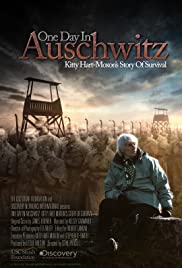
Auschwitz-Birkenau was designed to kill. Four gas chambers murdered thousands at a time, belching out smoke and human ashes. Starvation, thirst, disease, and hard labor reduced the average lifespan to less than three months. More than 1-million people perished in the largest German Nazi concentration and extermination camp. Seventy years after her liberation, Kitty Hart-Moxon makes a final return to Auschwitz-Birkenau to walk among the crumbling memorial with students Natalia and Lydia, who, at 16, are the same age now as she was then. As Kitty tells them her story of daily existence, themes begin to emerge: the ever-present threat of death, resilience, friendship, human strength, resisting the Nazis' constant lethal intent, and living like an animal while still remaining human. Natalia and Lydia ask questions; Kitty provides answers, passing her legacy to the next generation.
You May Also Like

Two real-life daredevils test the limits of their love and trust by illegally scaling one of the world's tallest buildings to perform an acrobatic stunt. ...

While Hans Jurgen Höss enjoyed a happy childhood in the family villa at Auschwitz, Jewish prisoner Anita Lasker-Wallfisch was trying to survive the notorious concentra ...

During the aggression on Ukraine, Russian soldiers killed more than 400 Ukrainian athletes. Russians destroyed hundreds of stadiums, sports centers, gyms, and pools. Thou ...

Six million Jews died during World War II, both in the extermination camps and murdered by the mobile commandos of the Einsatzgruppen and police battalions, whose members ...

A young filmmaker Ihor finds a hidden and unpublished photo archive of his grandfather Leonid Burlaka, a famous Soviet cinematographer. Discovering a man that he never kn ...

A poetic meditation on nature, mortality, and the passage of time in her exploration of our symbiotic nexus with trees. Weaving together several stories of arboreal adora ...